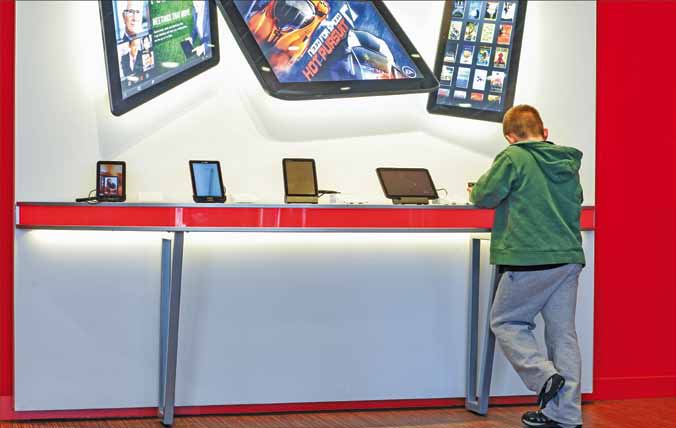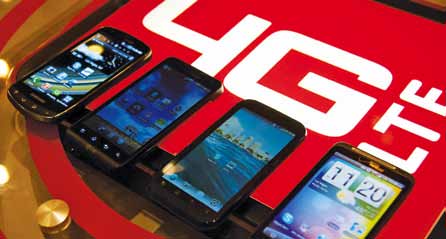AUGUST 2012: This year, Bharti Airtel launched a ‘4G’ service in Kolkata and Bengaluru, making India one of the first nations to adopt the newest baby in the wireless world. 4G or IMT-Advanced is the fourth generation in telecommunications, characterised by reliable lightning-speed broadband wireless access (BWA)—a dream come true for not just the young and raging population but also businesses, media agencies, governments and many more stakeholders. It is hoped that 4G will catalyse national development, as it means wireless communications to the nooks and corners, even across rugged terrains and the poorest of villages.
With the launch of Bharti Airtel’s service, umpteen questions have arisen in the minds of consumers across the country—what really is 4G, what sets it apart as a new generation, is Bharti Airtel’s service (based on the TDD-LTE standard) really 4G, what are the competing 4G standards, how is 4G doing worldwide, what are the pros and cons of this generation, and what is next in the pecking order? Here we try to answer these questions.
The fourth generation has just begun
Some service providers in countries like South Korea and Scandinavia started terming their service as 4G as early as 2006. Others started doing so in the US a few years later. Humbug and marketing tricks!


4G is a very nascent technology and there are very few deployments worldwide that qualify as 4G today—even by a very liberal definition. If we keep to the true definition of IMT-Advanced, 4G is not even here yet.
“In the mid 2000s, as 3G systems were being deployed, there was the initial definition of 4G as providing 100Mbps bandwidth. Subsequent to 2006, many systems which exceeded 40-50 Mbps started using ‘4G’ as a marketing ploy for their networks and some providers called their advanced 3G networks as ‘4G Lite’ with ‘Lite’ written in small print. This included WiMAX and HSPA+ systems. There were even legal litigations in the US courts by operators against each other for false advertising. It is interesting to note that the early versions of Long Term Evolution (LTE) were being dubbed as 3.99G in published literature. ITU finally provided a more definitive definition of 4G,” explains Dr Suresh Borkar, a member of faculty at the Illinois Institute of Technology, Chicago. Dr Borkar has wide consulting experience in commercial and public safety systems, telecom strategy formulation, spectrum and regulatory policies, and dynamic spectrum management.
In addition to general specifications on inter-working, handovers and quality of service, the key attributes defined by the ITU included an all-IP packet core and (downlink) bandwidth of 100 Mbps for mobile applications and 1 Gbps for nomadic and quasi-stationary applications. Taking into account the estimates and techniques like carrier aggregation and wider spectrum, there is now a general consensus in the telecommunications community that 3GPP’s LTE-Advanced (Release 10) and WiMAX 2.0 (IEEE 802.16m) can be classified as 4G systems.
LTE vs WiMax—A no-brainer!
The third generation of mobile communications is characterised mainly by HSPA+ and EV-DO. Similarly, two technologies qualify—technically—to be called as 4G. These are 3GPP’s LTE-Advanced and IEEE’s 802.16m (WiMAX 2.0). However, the race seems to be a no-brainer. With WiMAX 2.0 failing to take off, it looks like LTE is going to dominate the 4G world.
“WiMAX 802.16m has not been commercially successful. Hence deployment of 4G will be based on LTE-Advanced technology. These implementations are in a nascent stage worldwide. Large-scale deployment of 4G will take place only next year,” says Dr Abhay Karandikar, professor and head-Department of Electrical Engineering, IIT Bombay. IIT Bombay has made several contributions to IEEE 802.16m 4G standards, including bandwidth reservations, quality of service (QoS), relay, etc.
Experts agree that LTE-Advanced (LTE Releases 10 and 11) is the main technology on the 4G horizon. It is being standardised to use up to 100MHz channel bandwidth to achieve up to 1Gbps downlink throughput.
“In our opinion, it is okay to consider LTE (Releases 8 and 9) also to be 4G technology as it makes a radical breakthrough by adopting multi-carrier orthogonal frequency-division multiplexing (OFDM) technology. LTE has retained some level of backward compatibility to benefit from the UMTS experience and coexist with UMTS,” says Harpinder S. Matharu, senior product marketing manager-Communications Division, Xilinx.






